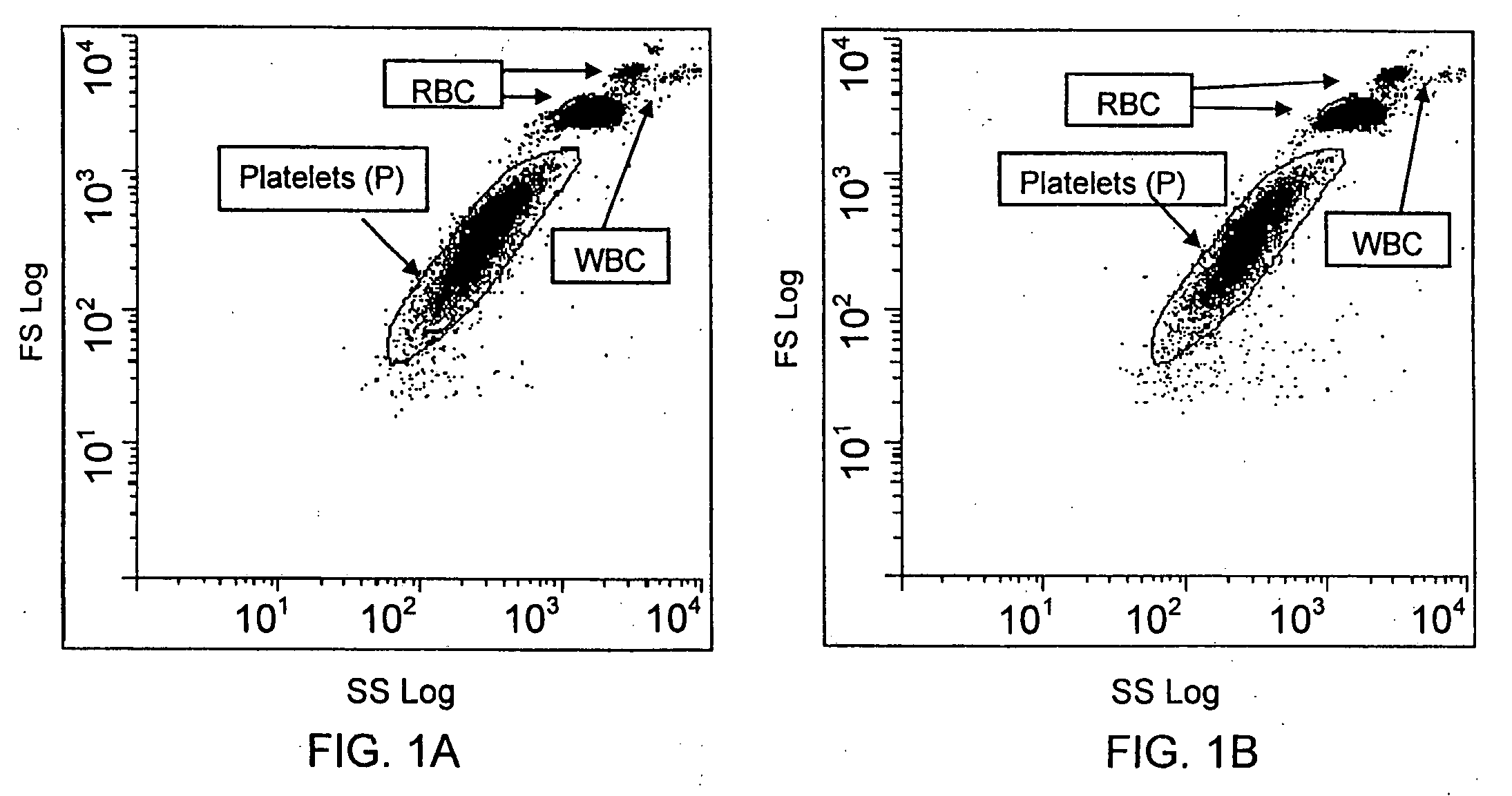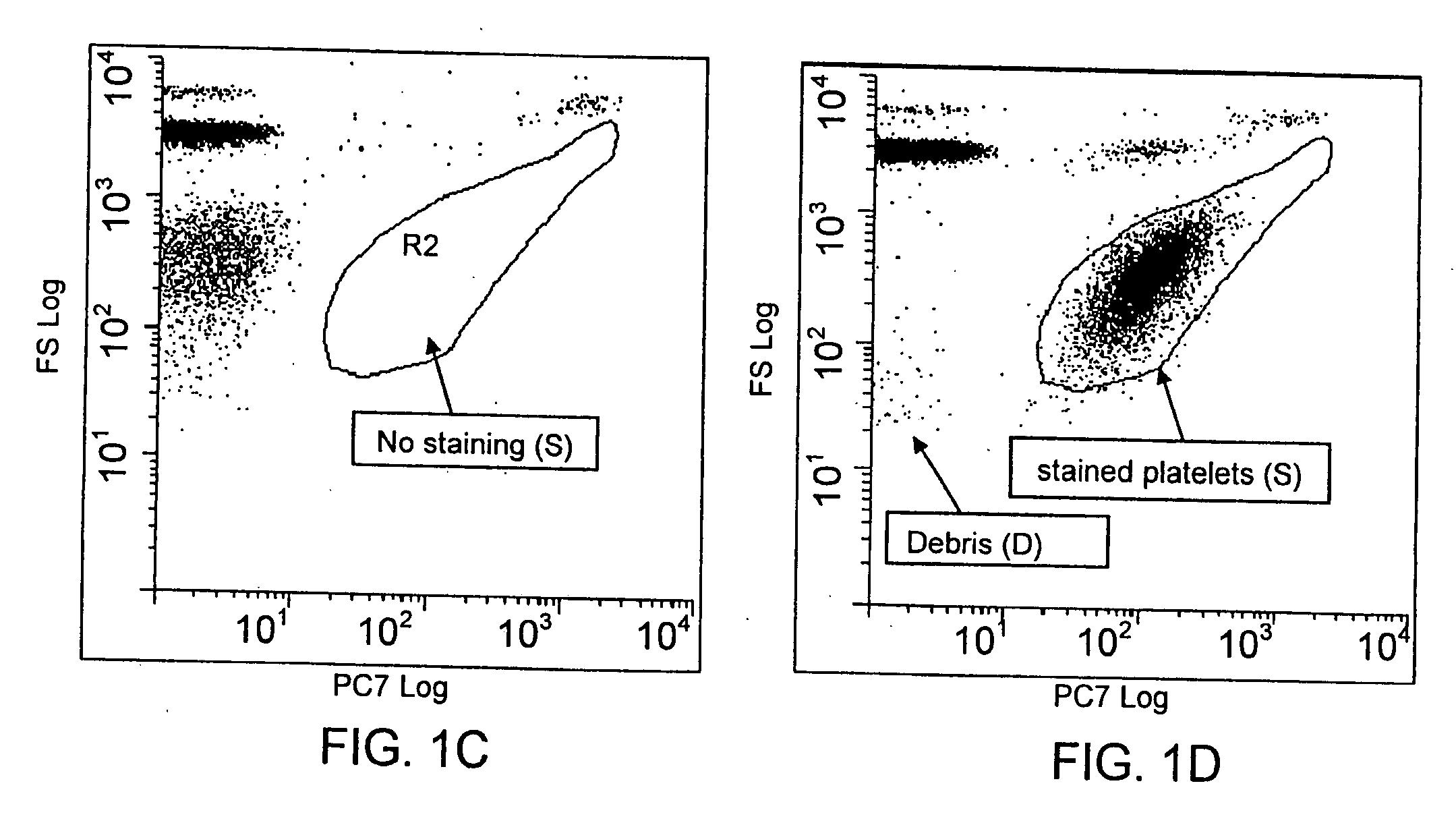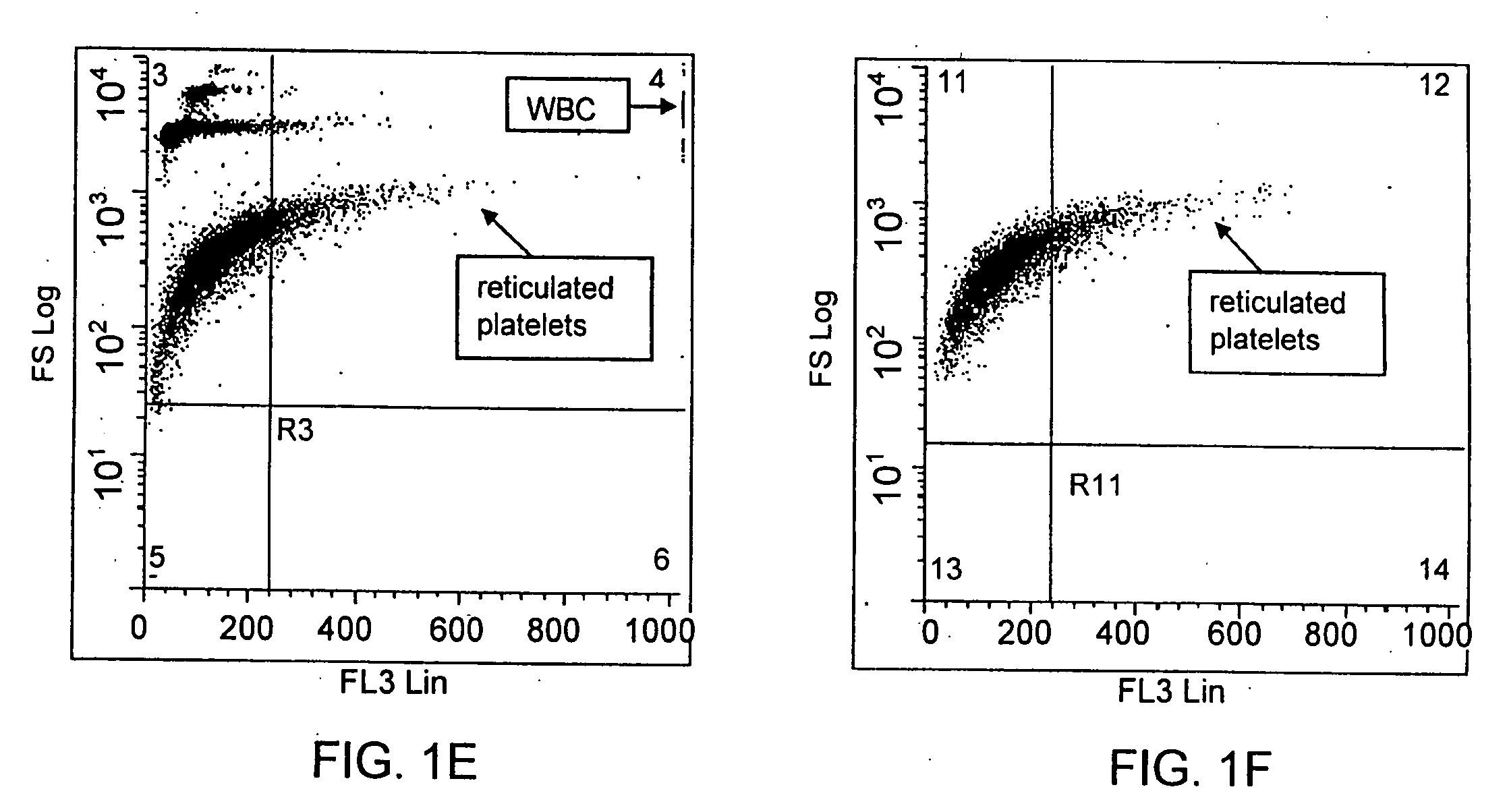Method for a rapid antibody-based analysis of platelet populations
a platelet and antibody-based technology, applied in the field of antibody-based analysis of platelet populations, can solve the problems of prone to human counting errors, cumbersome and laborious manual counting procedures, and methods, although useful for measuring mature platelets and reticulated platelets, suffer from certain drawbacks, and achieve the effect of rapid analysis
- Summary
- Abstract
- Description
- Claims
- Application Information
AI Technical Summary
Benefits of technology
Problems solved by technology
Method used
Image
Examples
example 1
Method of Identifying and Staining for Reticulated Platelets
[0135]i. The Rapid Staining Preparation
[0136]For each of the studies discussed herein and illustrated in the figures, a fluorochrome conjugated anti-platelet antibody, e.g., anti-CD41 (0.5 μg / mL) or anti-CD61 (0.5 μg / mL) was added to an aliquot of human whole blood (about 25 μL). The label conjugated to each antibody ligand was the fluorochrome, phycoerythrin-cyanine-7 (PeCy-7). Conjugation was by conventional means. Each antibody / sample mixture was incubated at ambient temperature for not more than 10 seconds.
[0137]Where appropriate for the samples described below and in the figures, an aliquot of the antibody stained sample (about 2 μL) was then added to the metachromatic nucleic acid dye Acridine Orange (0.1-1.0 μg / mL) in sphering buffer (0.5 to 2.0 mL), mixed and immediately measured. The entire reaction from antibody binding to nucleic acid staining was complete in less than 60 seconds.
ii. Compara...
example 2
Measuring Reticulated Platelets
[0153]Comparative values in reticulated platelets in normal volunteers and patients: A preliminary study was done with normal volunteers and patients with low platelet counts. Using the method of Example 1 using PE-Cy7-labeled anti-CD41 and Acridine Orange with whole blood samples, the distribution in percentage reticulated platelet values between normal volunteers and patients is distinctly different as shown in FIG. 6. There is a wider spread of values in the patient population.
PUM
| Property | Measurement | Unit |
|---|---|---|
| incubation time | aaaaa | aaaaa |
| incubation time | aaaaa | aaaaa |
| incubation time | aaaaa | aaaaa |
Abstract
Description
Claims
Application Information
 Login to View More
Login to View More - R&D
- Intellectual Property
- Life Sciences
- Materials
- Tech Scout
- Unparalleled Data Quality
- Higher Quality Content
- 60% Fewer Hallucinations
Browse by: Latest US Patents, China's latest patents, Technical Efficacy Thesaurus, Application Domain, Technology Topic, Popular Technical Reports.
© 2025 PatSnap. All rights reserved.Legal|Privacy policy|Modern Slavery Act Transparency Statement|Sitemap|About US| Contact US: help@patsnap.com



